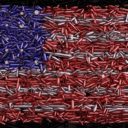

Demonstrators protest Tuesday’s fatal police shooting of Keith Lamont Scott in Charlotte, N.C. on Wednesday, Sept. 21, 2016. Protesters rushed police in riot gear at a downtown Charlotte hotel and officers have fired tear gas to disperse the crowd. At least one person was injured in the confrontation, though it wasn’t immediately clear how. Firefighters rushed in to pull the man to a waiting ambulance. (Photo: AP/Associated Press)
Celebrating the racial diversity of the Charlotte protesters last week, William Barber II, chairman of the North Carolina NAACP, proudly proclaimed, “This is what democracy looks like.”
Well, if Barber is right, so, too, was John Adams, who warned us that “democracy never lasts long. It soon wastes, exhausts, and murders itself. There never was a democracy yet that did not commit suicide.”
Consider what the protesters, who, exults Barber, “show us a way forward to peace and justice,” accomplished.
In the first two nights of rioting, the mob injured a dozen cops, beat white people, smashed and looted stores, blocked traffic, shut down interstate highways, got one person shot and killed, and forced the call-up of state troopers and National Guard to rescue an embattled Charlotte police force.
This was mobocracy, a criminal takeover of Charlotte’s downtown by misfits hurling racist and obscene insults and epithets not only at the cops but also at bystanders and reporters sent to cover their antics.
We have seen Charlotte before. It was a rerun of Ferguson, Baltimore and Manhattan, after mobs in those cities concluded that innocent black men had been deliberately killed by “racist white cops.”
Yet, one week later, what do we know of the precipitating event in Charlotte?
Keith Scott, 43-year-old African-American father of seven, was shot and killed not by a white cop, but by a black cop who shouted to him, along with others, almost 10 times — “Drop the gun!”
An ex-con whose convictions included assault with a deadly weapon, Scott was wearing an ankle holster and carrying a handgun.
Charlotte Police Chief Kerr Putney, also black, after viewing video from a dash-cam and a body-cam of the officers involved, recommended against filing any charges.
The chief concedes that he cannot, from the video footage, see a gun in Scott’s hands at the time he was shot.
But how is the legitimate investigation of the death of Keith Scott advanced by a mob? And if mass civil disobedience is what “democracy looks like” in 2016, why are we surprised that other nations look less and less to American democracy as their model?
Moreover, if these repeated reversions of the enraged to street action become the new normal, what do they portend for the country?
Blanket cable news coverage of the Ferguson riots split us along racial lines. But what purpose did they serve? Even Eric Holder’s Justice Department concluded that officer Darren Wilson should not be charged in the shooting death of Michael Brown, who tried to grab his gun.
A year ago, Baltimore divided the nation.
Six Baltimore cops, three of them black, were charged in an alleged “rough ride” in a police van that killed 25-year-old Freddie Gray.
This year, a black judge acquitted three of the cops in three trials, and all charges against the rest were dropped.
No evidence was produced that the cops had intended to injure Gray.
In New York, the five cops who piled on Eric Garner to subdue him never intended to injure him, said a grand jury. Well over 300 pounds, Garner suffered from obesity, diabetes, asthma and hypertension, and died, not of a police chokehold, but a heart attack.
Yes, there have been incidents when cops made mistakes and cases where cops acted criminally. In Tulsa last week, after a white cop shot and killed an unarmed black man who appeared to offer no threat, she was charged with first-degree manslaughter. Is not this, rather than marching mobs, the way to handle such incidents?
Inevitably, given the violent crime in our cities — 540 murders this year in Chicago and 3,000 shootings — white and black cops are going to be confronting white and black suspects. Inevitably, some of these collisions are going to result in police shootings and black deaths.
While most of those police decisions to shoot are going to be seen in retrospect as justified, some will not be unjustified, and some will be malicious.
The latter will be rare, but they are going to happen.
But in a nation of 320 million, if every collision between white cops and black men resulting in the death of a suspect is to be seen as legitimate grounds for mob action like Charlotte, we will never know racial peace.
Like moths to a flame, TV cameras are attracted to conflict, especially racial conflict. Networks and TV stations reward with airtime the most incendiary of racial charges. Thus, the news going out to homes and bars will continue to polarize us along racial lines.
And when the rage of one side and the disgust of the other dissipate, some new incident, between white cops and black men, will occur, and will be recorded, and rushed onto the air.
The street action in Ferguson, Baltimore and Charlotte may be what “democracy looks like” to Barber’s NAACP. But to most Americans, it looks like a formula for endless racial conflict — and a touch of fascism in the night.







Scrambull / September 28, 2016
@PPDNews if Hillary is elected that is the plan. Ever wonder why the govt bought so many bullets?
/
James Sandefur / September 28, 2016
@PPDNews It might very well be if we don’t change the status quo! The Dems had more than enough time to make a difference.
/